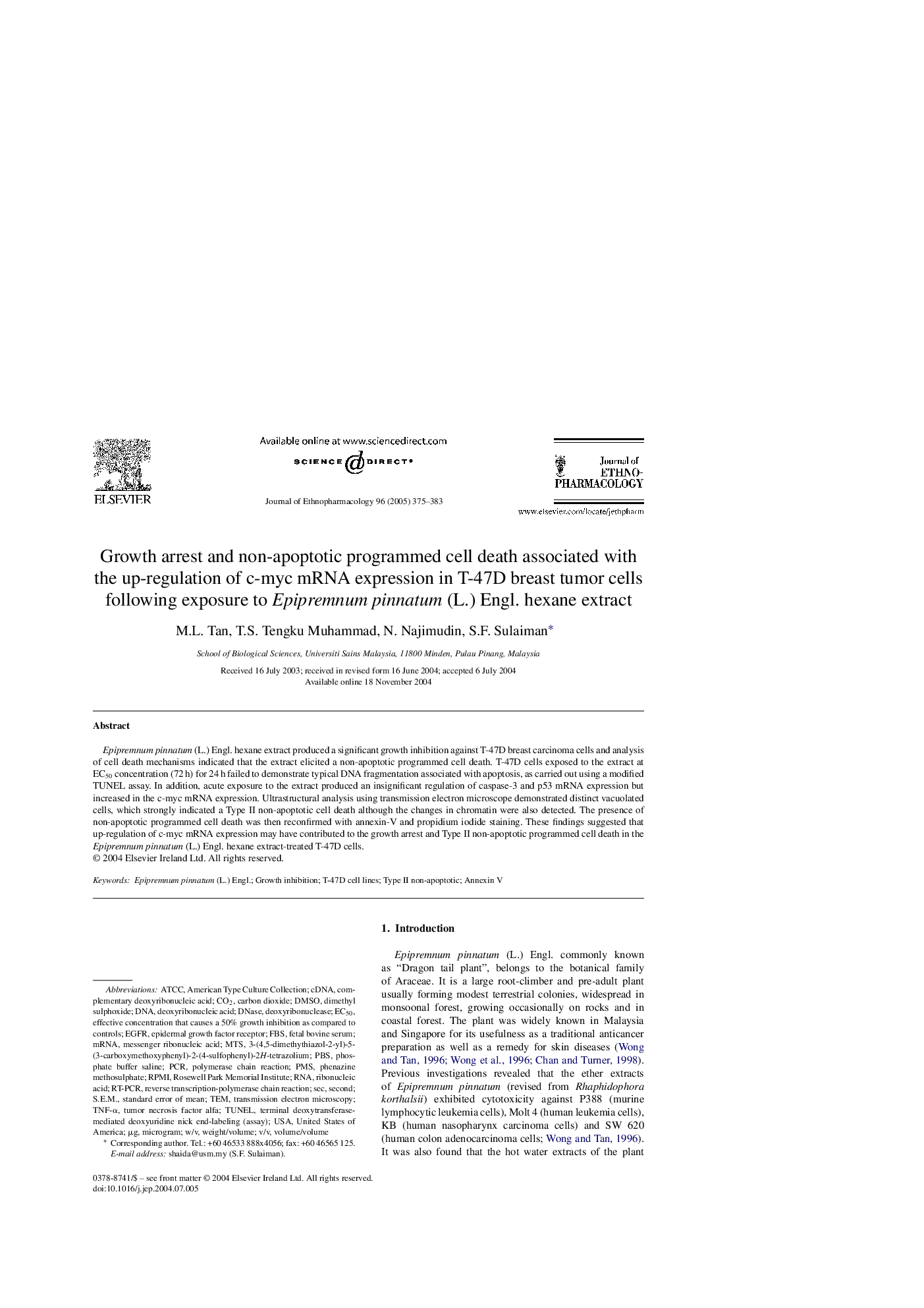| Article ID | Journal | Published Year | Pages | File Type |
|---|---|---|---|---|
| 9009899 | Journal of Ethnopharmacology | 2005 | 9 Pages |
Abstract
Epipremnum pinnatum (L.) Engl. hexane extract produced a significant growth inhibition against T-47D breast carcinoma cells and analysis of cell death mechanisms indicated that the extract elicited a non-apoptotic programmed cell death. T-47D cells exposed to the extract at EC50 concentration (72Â h) for 24Â h failed to demonstrate typical DNA fragmentation associated with apoptosis, as carried out using a modified TUNEL assay. In addition, acute exposure to the extract produced an insignificant regulation of caspase-3 and p53 mRNA expression but increased in the c-myc mRNA expression. Ultrastructural analysis using transmission electron microscope demonstrated distinct vacuolated cells, which strongly indicated a Type II non-apoptotic cell death although the changes in chromatin were also detected. The presence of non-apoptotic programmed cell death was then reconfirmed with annexin-V and propidium iodide staining. These findings suggested that up-regulation of c-myc mRNA expression may have contributed to the growth arrest and Type II non-apoptotic programmed cell death in the Epipremnum pinnatum (L.) Engl. hexane extract-treated T-47D cells.
Keywords
RT-PCRμgATCCMTSdeoxyribonucleaseRPMIS.E.M.MicrogramEC50mRNAPMSSECEGFRFBSPBScDNADMSODNADNAsev/vw/vAnnexin Vdeoxyribonucleic acidcomplementary deoxyribonucleic acidRNAribonucleic acidUnited States of AmericaUSATemTUNELvolume/volumestandard error of meanSeconddimethyl sulphoxideCarbon dioxidemessenger ribonucleic acidfetal bovine serumtumor necrosis factor alfaTNF-αphosphate buffer salinephenazine methosulphateAmerican Type Culture Collectiongrowth inhibitionRosewell Park Memorial InstituteTransmission electron microscopyreverse transcription-polymerase chain reactionpolymerase chain reactionPCRweight/volumeCO2Epidermal growth factor receptor
Related Topics
Health Sciences
Pharmacology, Toxicology and Pharmaceutical Science
Pharmacology
Authors
M.L. Tan, T.S. Tengku Muhammad, N. Najimudin, S.F. Sulaiman,
